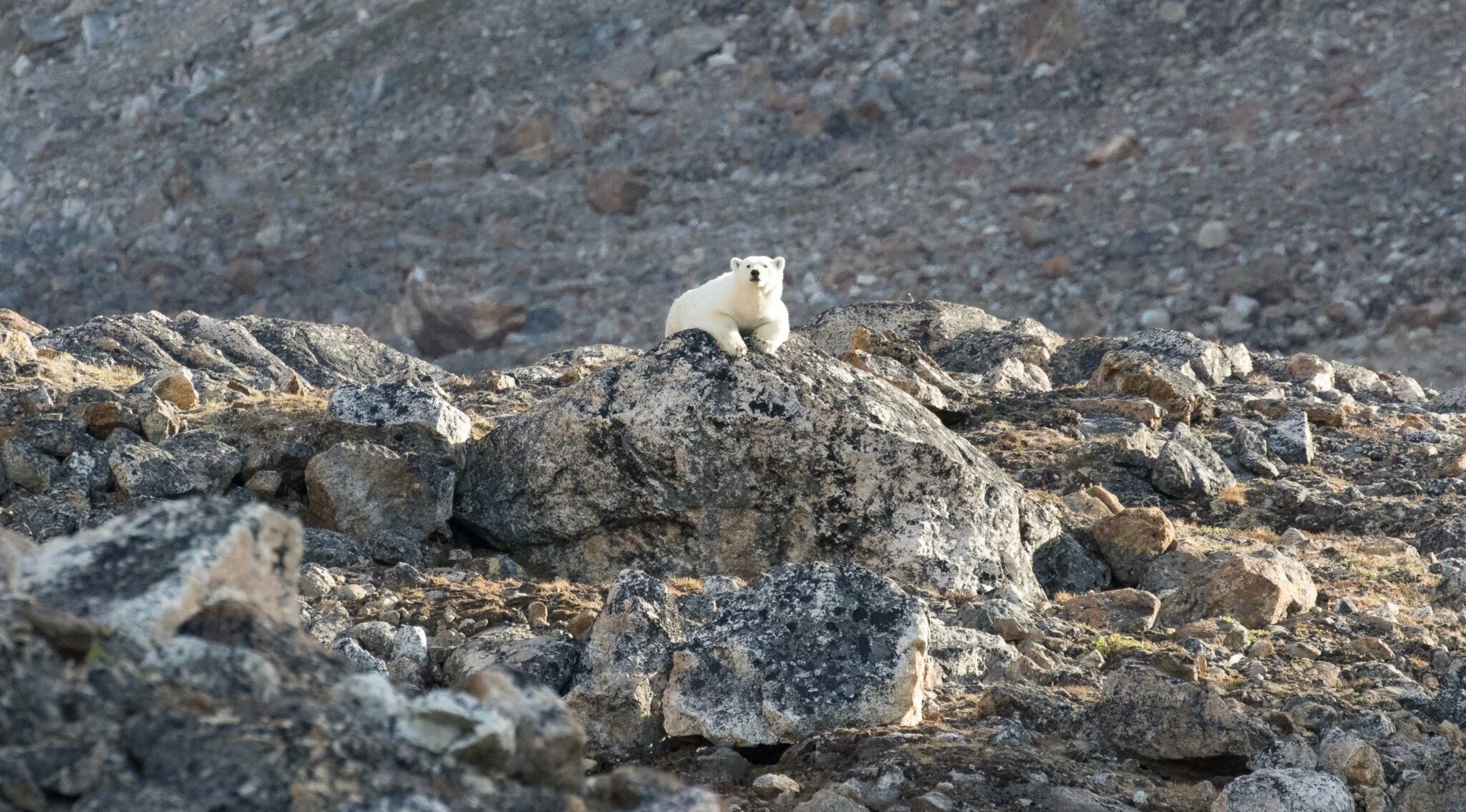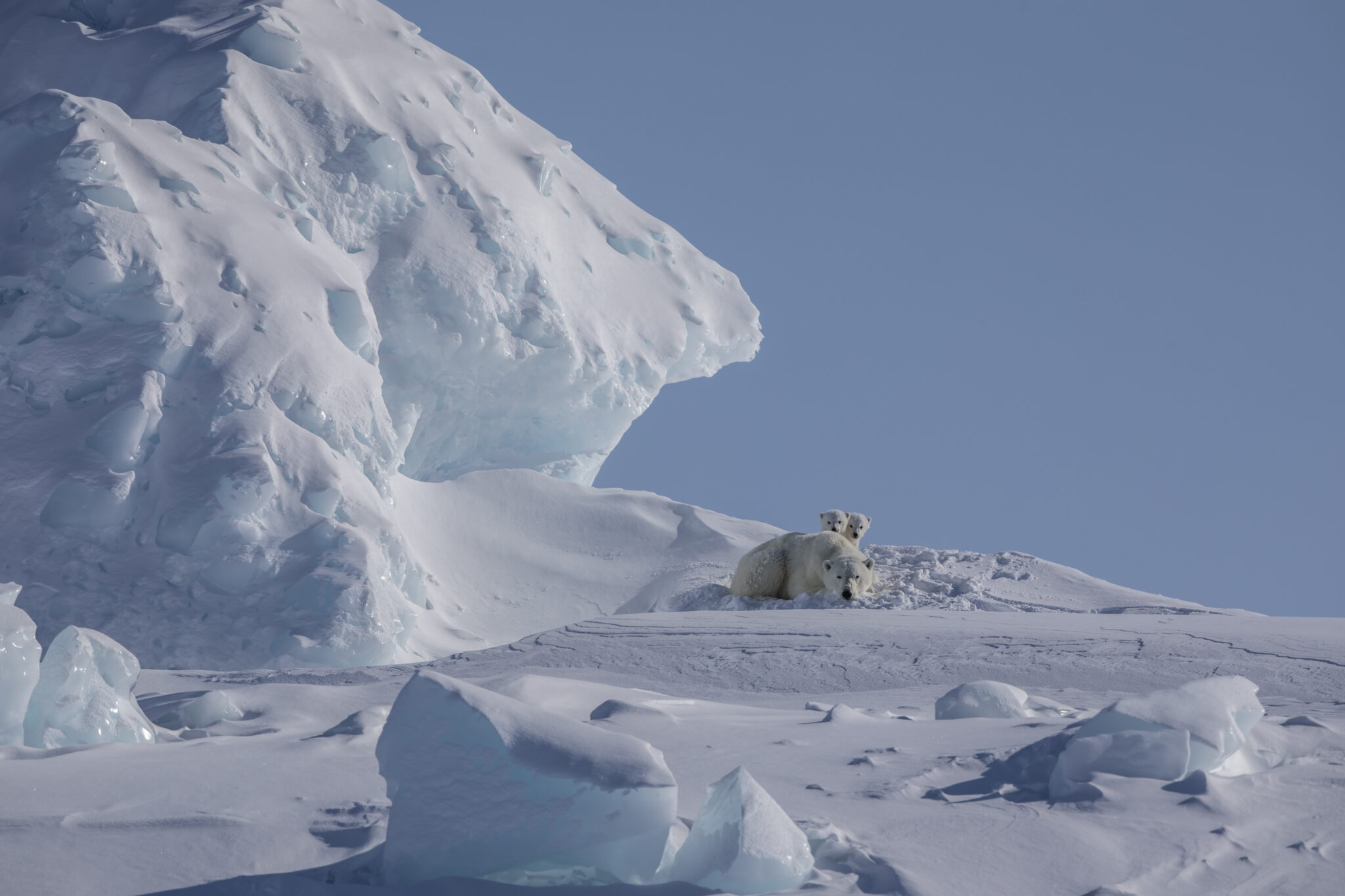Arctic Kingdom has been providing unforgettable and unique Arctic experiences for over 20 years. As a proud industry leader, we offer bespoke trips to unforgettable places such as the North Pole.
A place as exclusive as the North Pole may seem unreachable for the average traveler, but with our expert travel advice and dedicated staff, we can help you prepare for a journey to the top of the world.
If being among the few names of people to visit the North Pole excites you, read on to discover what to expect from a trip there.
North Pole Weather: What to Expect
The weather and climate of the North Pole are highly dependent on the time of year you visit. It’s said that the Arctic only has two seasons – winter and summer. So, if you're interested in visiting the North Pole, you need to decide which sort of North Pole you wish to visit.
The weather at the North Pole depends on two main factors. The curvature of the Earth means that the Sun isn't reaching it directly, but rather at an angle. The second is that it’s covered in sea ice throughout the year.
The low angle of the Sun's rays means that the region loses more heat than it receives. Another factor is the amount of time the Sun is above the horizon. In the summer, the Sun stays in the sky for 24 hours since the Earth is tilted towards the Sun. In winter, however, the North Pole faces away from the Sun, so there are 24 hours of darkness.
The North Pole is warmer than the South Pole, and conditions are more consistent. The Antarctic ice cap creates an atmospheric vortex that stays above the continent. While the North Pole has a cold but dry climate. Since the sea is frozen, the water can't evaporate, so it doesn't rain and has low humidity.
The southern extent of the Arctic Circle is based on the two solstice days, but the further north you travel, the longer the periods of either no Sun – the Polar Night – and the period of constant Sun – the Midnight Sun. So, there is continuous sunlight at the North Pole for six months, from late March to late September.
What To Wear
The Arctic System
When preparing for the polar regions, it’s essential to understand that how you dress will define your comfort level. The goal isn't always to wear as many layers as possible, but to wear smart layers.
Underlayer
You’ll want to pack a moisture-wicking underlayer and underwear. You’ll wear several layers, so if you become sweaty and your underlayer holds that moisture, it will give you a chill. Pack long sleeve activewear like polyester or polypropylene that are not too tight or too baggy, but never cotton.
Mid-layer
Your mid-layer can be heavier and more comfortable. We suggest wool or fleece, not cotton. These are materials that can get a little wet, but will still insulate your body. We suggest something neither tight nor baggy. We want it to fit well since if it is too tight, your body struggles to regulate itself, and if it's too baggy, then air can escape or wind can get in. Fleeces or turtlenecks are ideal layers. It’s always wise to pack an extra mid-layer that you can easily put on or take off to regulate your warmth, but too many layers will make it hard to walk or sit.
Outer Layer
This is where waterproof items are important. Whether it’s snow in the winter or ocean spray in the summer, you want an outer layer that will protect you from water. The outer layer protects the inner layers from getting wet and should help against the wind. The shell you bring should be insulated, waterproof and windproof. The best item for your bottom outer layer is snow pants, which are designed for these conditions and activities.
Extra Items
- Hat and gloves — Much of your warmth escapes through the top of your head and your hands, so wearing a toque and well-fitting gloves will make a big difference. A pair of under-gloves is always a good idea since they're a layer you can easily add or remove.
- Scarf — Cover exposed places like your neck to retain heat more effectively.
- Warm socks — A layer of moisture-wicking socks underneath a pair of wool socks is what we’d recommend. Feet can often sweat, even in the cold, so a layer that can prevent the moisture from building underneath a warmer layer of thick socks is ideal.
- Sunglasses — The snow reflects the Sun’s rays and can harm your eyes, so a pair of polarized sunglasses is essential. Consider packing a strap for your sunglasses, making them more accessible when exploring.
- Backpack — By bringing a backpack, you’ll be able to store extra layers and any other items you want access to, such as your camera or energy bars. We’d recommend bringing a waterproof backpack.
- Camera(s) and extra batteries — The cold has a way of draining batteries so ensure you pack extra ones so you can photograph throughout the day. We’d also suggest a waterproof case for your camera to protect from the snow and then moisture once you return from the cold into the warmth of shelter.
- Sunblock — Snow and water reflect the Sun’s UV rays, so you’re at additional risk of exposure even in the cold. Apply sunblock to all areas of exposed skin, such as your face and lips, throughout the day.
- Binoculars — Useful for helping to spot wildlife or view landscapes.
- Headlamp flashlight — Even in the summer, a handless flashlight can help you to read at night or find your way to the bathroom.
- Water bottle — The best way to enjoy any activity is to be well-hydrated. You might not think it’s as important in colder climates, but dehydration and headaches can detract from your experience.
Provided Items
Arctic Kingdom can provide items you might not own, such as a parka and rubber boots.
Through years of trial and experience, we know the best parkas and boots to make your trip as comfortable as possible.
What Can You See There?
The North Pole itself may not have a lot of wildlife, but the ocean and islands around it are full of remarkable animals.
Along the way, you might spot caribou, polar bears, arctic foxes, narwhals, belugas, bowhead whales, walruses, seals and arctic seabirds.
But one of the true highlights of the North Pole is the Northern Lights. This is one of our planet's most breathtaking phenomena.
When solar flares escape the Sun, they collide with Earth's atmosphere. When these solar rays hit our atmospheric particles, we see a colorful reaction in the sky. It appears as purple, green and blue waves dancing across the sky.
Experience the Arctic On A Safari
Get chances to view elusive Arctic wildlife and experience the majesty of the Arctic on safaris almost all-year-round. View all of our Arctic tours and Safaris by clicking below.
We also now have a Gear Shop where you can browse some of the best outdoor clothing and equipment to buy or gift to friends and family.
By: Mat Whitelaw






